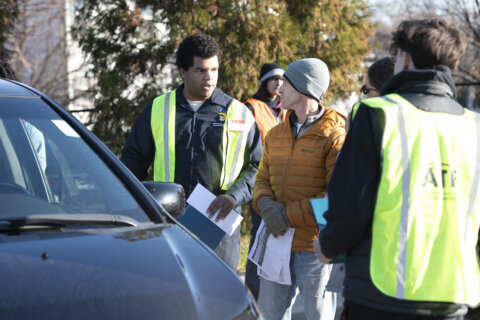ROCKVILLE, Md. — They moved to neighborhoods such as Kenwood and Sumner Hills for the suburban feel of the tree-lined communities close to Washington, D.C.
And now, residents who opposed the Westbard sector plan for Bethesda are furious because the Montgomery County Council voted 9 to 0 to adopt the proposal as part of the county’s master plan.
Bethesda resident Patricia Kolesar calls the plan “a density dump” and said the addition of up to 1,200 townhouses and apartments in the area — bounded by River Road and Massachusetts Avenue — will swamp the schools and surrounding communities. The homes would be built over the next 20 to 30 years.
“They’re bringing too many people to a concentrated area,” Kolesar said. “There’s just not enough room for all these people.”
But county planners say there is enough room for the housing in the plan, including enough capacity for the school-aged children included in population projections.
According to county figures compiled by the school system and county planners, it’s expected that when the area off River Road is built out, an additional 205 school children would be attending the Walt Whitman High School cluster.
As the final vote was taken Tuesday afternoon, council members made cases for their decisions.
Councilman Roger Berliner, who represents Bethesda, referenced the amount of heat he’s taken for supporting the project. His office alone has gotten up to 3,000 emails, some of which, a council staffer said, were nasty and personally insulting.
“I have certainly gotten the message that this vote will cost me politically,” said Berliner, who cast a “yes” vote. “Part of the reason why people have lost faith in their elected leaders is because they see them constantly trying to see which way the political winds are blowing rather than standing by their convictions.”
Westbard opponent Kolesar, who spent the entire council session holding up a banner that read in part “Save Westbard,” said Berliner — and the entire council — should face political payback for their votes in favor of the development.
“Perhaps this rogue council will find out what happens when they ignore 80 percent of the people” who live in the neighborhoods affected by Tuesday’s vote, Kolesar said.
Under the zoning for the project, 15 percent of the housing units will be “affordable housing.” Under the county’s formula, that means a qualifying occupant would make 60 to 70 percent of the area’s median income.
According to Casey Anderson, Montgomery County Planning Board chair, that means a family of four making somewhere in the neighborhood of $60,000 to $75,000 would qualify for those moderately priced dwelling units.
Right now, the 1960’s-era Westwood Shopping Center, anchored by a Giant grocery store, sits in the heart of the project. It’s an aging strip style center.
“The core of Westbard’s commercial center character today is defined by asphalt, gas stations, tall buildings and a rundown shopping center,” Berliner said.
Anderson said the plan will improve the Westbard area. Dismissing the accusations that the plan is a giveback to developers, Anderson said he would “never make a recommendation for any land-use plan, real estate development project that I wouldn’t want in my neighborhood.”
Under the Equity One development plan, a more walkable town center would replace the current commercial area, a shuttle would take residents to nearby Metro stations, and the commercial section would include retail and restaurants.
Green space would replace the sprawling asphalt parking lot and Willetts Creek, now set in a concrete culvert, would be restored to a more natural landscape bed.
Equity One developers released a statement after the vote: “This has been a long process, and we appreciate the time and hard work the community, planners and the Council have invested in updating the Westbard Sector Plan. We look forward to the next stage and continuing our work with all stakeholders as we move toward a new mixed-use Westwood that’s modern, convenient and community friendly.”
Not everyone in the community is upset with the plan.
In an email to WTOP, Phyllis Edelman, who is the president of the Springfield Civic Association, says, “There are benefits to the plan that all communities surrounding Westbard will enjoy — an updated shopping area, more trees and green space and provided the funding can be found, a renovated Willett Branch stream that flows through the heart of the sector. In addition, the plan includes a minimum of 15 percent affordable housing to be built with a few of the developers including significantly more than this 15 percent.”
Colleen Kelleher contributed to this story.








